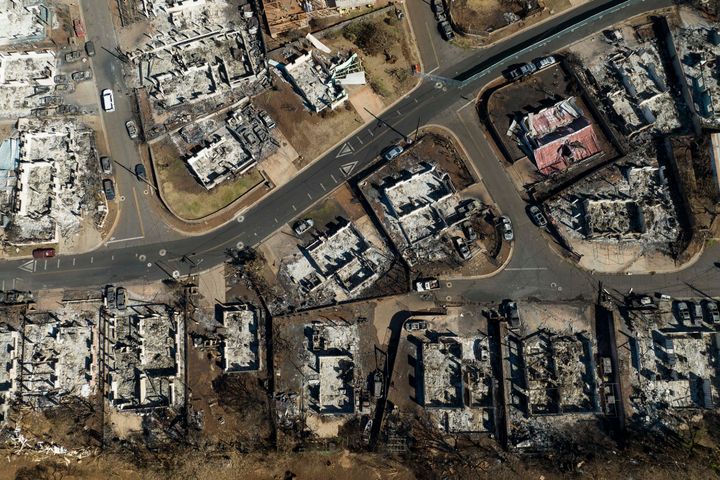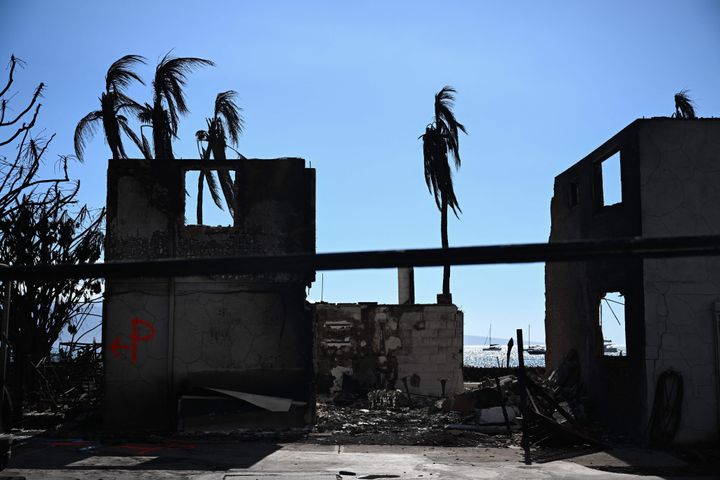HONOLULU (AP) — The wildfire that killed at least 102 people on Maui last year erupted from an earlier brushfire caused by downed power lines that firefighters believed they had extinguished, officials confirmed, Wednesday as they presented their findings on the cause of the tragedy.
The Aug. 8, 2023, blaze — the deadliest U.S. wildfire in more than a century — was long known to have emerged in the afternoon, in the same area as blaze that began early that morning. Driven by strong, erratic winds, the fire raced through the historic town of Lahaina, destroying thousands of buildings, overcoming people trapped in their cars and forcing some residents to flee into the ocean.
It has been unclear whether the blaze was a rekindling of the morning fire after firefighters spent hours dousing it or a separate one. The answer could prove significant to questions about liability for the destruction, though a tentative $4 billion settlement has been reached.

In presenting their findings, officials with the U.S. Bureau of Alcohol, Tobacco, Firearms and Explosives and the Maui Fire Department did not address liability, but found that it was a rekindling of the morning fire.
The rekindling was most likely caused by high winds that blew undetected embers into the dry gully, they said.
A Hawaiian Electric power line fell early on the morning of Aug. 8, sparking a fire in overgrown brush near the edge of town. Fire crews responded and stayed for several hours until they believed the fire was extinguished. After they left, flames were spotted again and though firefighters rushed back, they were no match for the wind and flames.
Communication between the police and fire departments was spotty, cellphone networks were down and emergency officials did not activate the emergency sirens that might have warned residents to evacuate. Power lines and poles had fallen in many locations throughout town, and police blocked some roads to protect residents from potentially dangerous power lines. First responders also had trouble getting a firm answer from Hawaiian Electric representatives if the power had been cut to the area.
The blocked roads contributed to gridlock that left fleeing people trapped in their cars as the flames advanced. Others died in their homes or outside as they tried to escape. The death toll surpassed that of the 2018 Camp Fire in northern California, which left 85 dead and destroyed the town of Paradise.
Support Free Journalism
Already contributed? Log in to hide these messages.

In the months since, thousands of Lahaina residents have sued various parties they believe to be at fault for the fire, including Hawaiian Electric, Maui County and the state of Hawaii. The defendants have often tried to point fingers at each other, with Hawaiian Electric saying the county shouldn’t have left the first fire unattended, and Maui County contending the electric utility failed to take proper care with the power grid. Exactly who was responsible for clearing brush and maintaining area has also been a point of contention among the defendants, along with the utility’s lack of a public safety power shut-off program.
A few days before the one-year anniversary of the wildfires, Hawaii Gov. Josh Green announced a $4 billion settlement. That’s the amount the defendants — including Hawaiian Electric, the state, Maui County, large landowners and others — have agreed to pay to settle claims.
But the deal is tied up in court, awaiting a decision from Hawaii Supreme Court on whether insurance companies can go after the defendants separately to recoup what they’ve paid to policyholders. Lawyers for people seeking compensation fear allowing insurance companies to sue Hawaiian Electric and others will subvert the deal, drain what is available to pay fire victims and lead to prolonged litigation. ___
Boone reported from Boise, Idaho.
Support Free Journalism
Already contributed? Log in to hide these messages.
